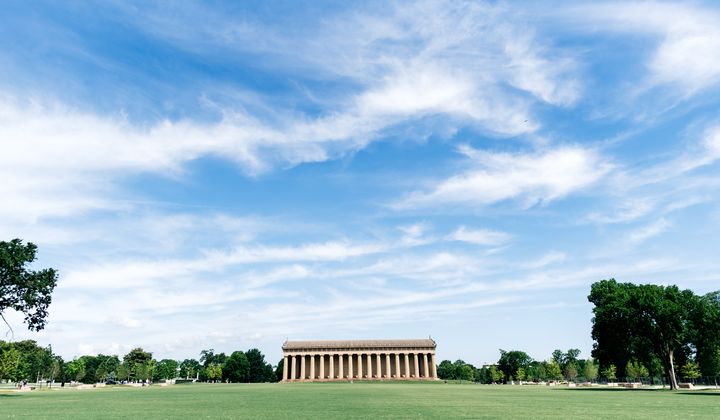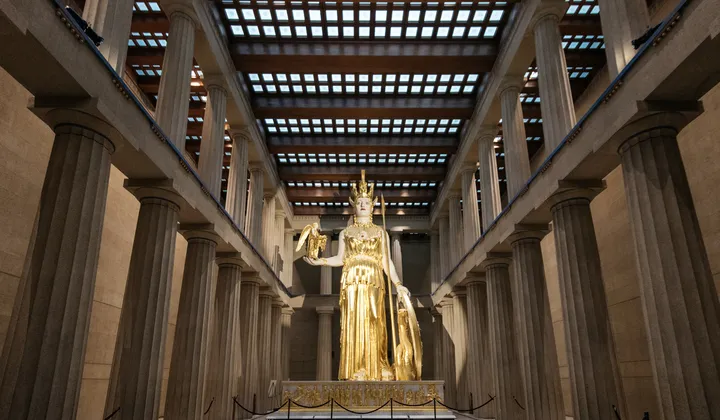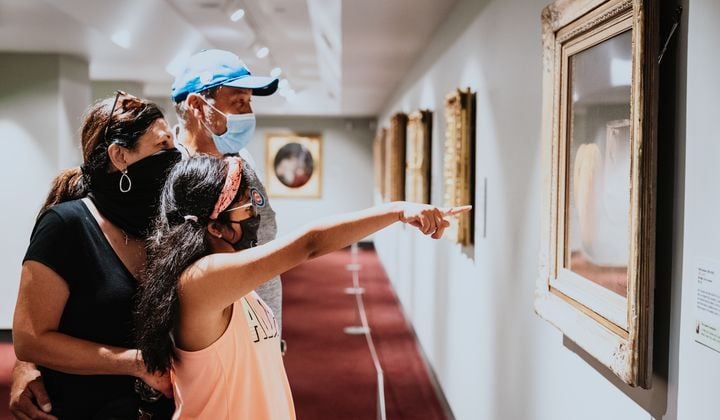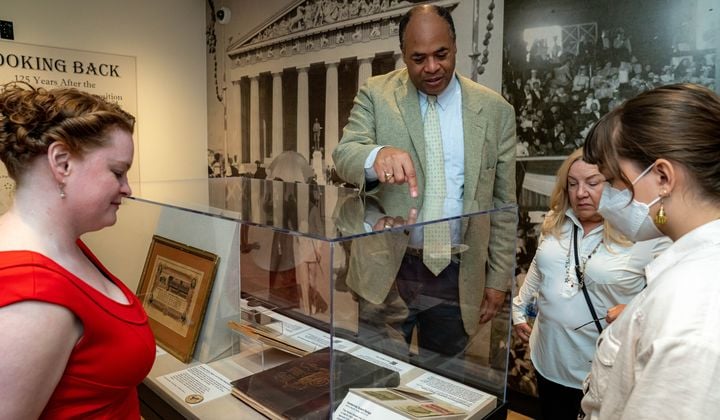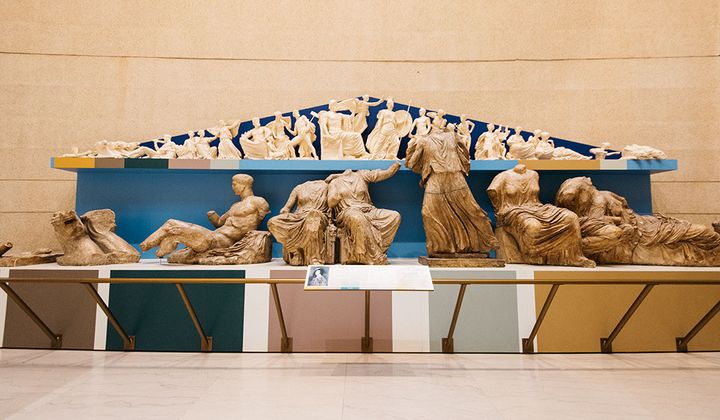The Parthenon
2600 West End Ave, Nashville, TN 37203 - United States
The Parthenon stands proudly as the centerpiece of Centennial Park, Nashville's premier urban park. Originally built for Tennessee's 1897 Centennial Exposition, this replica of the Parthenon in Athens, Greece, serves as a monument to what is considered the pinnacle of classical architecture.
The Parthenon also serves as Nashville's art museum. The focus of the Parthenon's permanent collection is a group of 63 paintings by 19th and 20th century American artists donated by James M. Cowan. Additional gallery spaces provide a venue for a variety of temporary exhibitions.
The re-creation of the 42-foot statue Athena is the focus of the Parthenon just as it was in ancient Greece. The building and the Athena statue are both full-scale replicas of the Athenian originals. The plaster replicas of the Parthenon Marbles found in the Naos are direct casts of the original sculptures, which adorned the pediments of the Athenian Parthenon dating back to 438 BCE.
The Parthenon does not allow food, drinks (including water), gum, non-service animals, or oversized bags inside. Strollers are welcome. Photography is permitted.
Exhibits
A visit to the Parthenon is a self-guided exploration, and a free brochure with a floor plan will help guide you during your visit. A typical visitor spends 60-90 minutes in the Parthenon. Groups 10+ must register in advance.
Special Programs
Check the Museum Calendar for the most up-to-date program information: www.nashvilleparthenon.com/events
10 AM Architecture Tour
This program is led by an archaeologist and meets at the Parthenon and takes places outside the Parthenon to explore the architectural refinements.
Free to the public, and free with Museum Day ticket.
1-1:30 PM Art Cart
This informal program takes place inside the Parthenon and highlights the unique collection of the Parthenon, stop by anytime from 1-1:30 PM.
Free with Museum Day ticket; free for CPC members, or museum admission required.
3-3:30 PM Greek Tales
This is a special 30-minute performance by Metro Parks Theatre, and will take place inside the Parthenon in the Naos from 3-3:30 PM.
Free with Museum Day ticket; free for CPC members, or museum admission required.
Exhibitions
Looking Back: 125 Years After the Tennessee Centennial Exposition
In celebration of the 125th anniversary of the Tennessee Centennial Exposition, the Looking Back exhibit aims to provide an immersive experience for visitors. Previously unseen photographs of the Exposition span from floor to ceiling in the galleries and musical compositions created specifically for the Exposition play as visitors explore rarely exhibited items relating to the fair celebrating Tennessee’s 100 years of statehood. The story of the Exposition will be told through items treasured by the visitors in 1897.
Free with Museum Day ticket.
The Odyssey: A Retelling, by Lisa Bachman Jones, takes inspiration from Emily Wilson’s 2017 translation of Homer's epic poem the Odyssey. The exhibition highlights the hospitality of the overlooked identities that made Odysseus’ long journey home possible. The body of work incorporates a wide range of media and techniques, which echoes the number of communities, locations, actions and objects that paved the way for the classic homecoming. Jones is a Nashville-based artist interested in entropy and interconnectivity. Working across disciplines, she investigates the everyday through a lens of care.
Free with Museum Day ticket.
Cowan Collection of American Art
A rotating selection of the Cowan Collection of American Art is always on display. Known as one of the finest collections of American art in the mid-South, the primary concentration in the collection is landscapes, including many plein air paintings (done on location) and a few seascapes which emphasize an undulating ocean and coast, a difficult and unusual subject matter. There are eight portraits in the collection, in all of which the subject of the portrait is anonymous. A distinguishing characteristic of this collection is that almost all of artworks are by American artists mostly in the late 19th and early 20th centuries, and almost all of the artists were members of the National Academy of Design, a prestigious artists' league.
Free with Museum Day ticket.
Athena Parthenos
From 1982-1990, Nashville artist Alan LeQuire built a full-scale replica of Athena Parthenos, the colossal statue inside the Parthenon during ancient times. Athena stood in the Naos as a plain, white statue for 12 years until her gilding to make her appear closer to the ancient Athena Parthenos. In addition to gilding, the project included painted details on her face, wardrobe, and shield.
Free with Museum Day ticket.
Parthenon Marbles
The Nashville Parthenon's permanent collection includes 14 casts of the original Parthenon Marbles that were purchased in the 1920s from the Victoria and Albert Museum in London. The casts were molded from the remaining fragments of the Parthenon Marbles housed in London and represent some of the most celebrated sculptures in the history of classical art. They have been on display in Nashville since 1931.
Free with Museum Day ticket.
Model Crane
The Model Crane is 1/10th the size of the wooden crane used to build the ancient Parthenon. Archaeological evidence indicates the existence and use of temporary superstructures, such as cranes, to control the vertical lifting of stones in Greece dates back to at least the 5th century BCE. The construction devices used by architects Iktinos and Kallikrates included four massive cranes, one on each side of the building. Each crane was 90 feet high and was placed on rollers along a track for ease of movement along that side of the structure. Two important considerations for the use of these huge devices - ground stability and base stability - were solved with the implementation of stone tracks to prevent the crane from sinking, and the use of counterweights at the base so that the magnitude and movement of the load would not cause the crane to topple. The use of ropes, pulleys and a ratchet system permitted large wheels on each side of the crane to hoist the huge pieces of marble into place. The inclusion of ladders and platforms within the structure of the crane allowed builders opportunities to monitor construction from above.
Free with Museum Day ticket.
Participation in Museum Day is open to any tax-exempt or governmental museum or cultural venue on a voluntary basis. Smithsonian magazine encourages museum visitation, but is not responsible for and does not endorse the content of the participating museums and cultural venues, and does not subsidize museums that participate.


